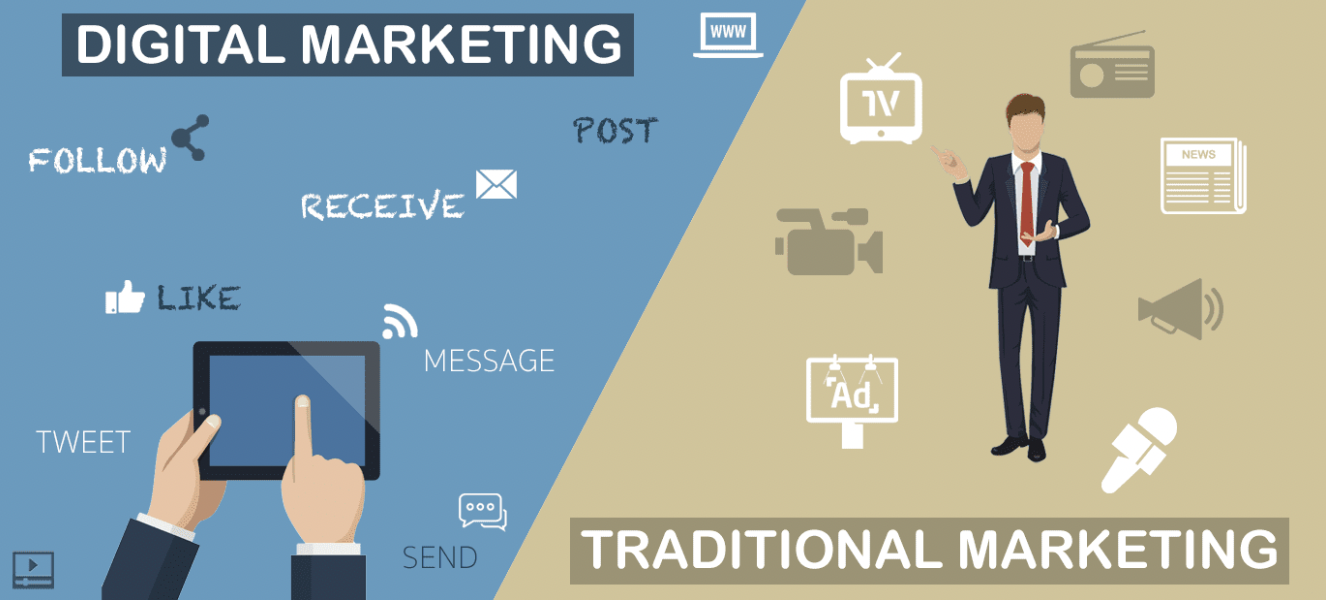
Embark on a journey through the diverse realms of advertising as we explore the distinct advantages and limitations of social media advertising and traditional advertising channels. In today’s ever-evolving marketing landscape, businesses are presented with a multitude of options for reaching their target audiences, each offering unique opportunities and challenges. From the digital realm of social media to the traditional mediums of print, television, and radio, advertisers must carefully navigate their choices to maximize their impact and ROI. In this guide, we’ll compare the pros and cons of social media advertising and traditional advertising to help businesses make informed decisions about their advertising strategies.
1. Social Media Advertising
Pros:
- Targeted Reach: Social media platforms offer sophisticated targeting options based on demographics, interests, behaviors, and engagement metrics, allowing advertisers to reach highly specific audience segments with precision.
- Cost-Effectiveness: Social media advertising often requires lower initial investments compared to traditional channels, making it accessible to businesses of all sizes and budgets. Advertisers can set custom budgets and bidding strategies to control costs and maximize ROI.
- Measurable Results: Social media advertising provides detailed analytics and reporting tools that allow advertisers to track key performance metrics such as impressions, clicks, conversions, and engagement rates in real-time, enabling data-driven decision-making and optimization.
- Interactivity and Engagement: Social media ads offer interactive features such as likes, comments, shares, and direct messaging, allowing advertisers to engage with their audience in meaningful conversations and build relationships over time.
- Flexibility and Agility: Social media advertising offers flexibility in terms of ad formats, placements, and creative assets, allowing advertisers to experiment with different strategies and iterate on their campaigns quickly in response to audience feedback and market trends.
Cons:
- Ad Fatigue: With the prevalence of sponsored content on social media feeds, users may experience ad fatigue and become desensitized to advertising messages over time, leading to decreased engagement and effectiveness of ads.
- Platform Algorithm Changes: Social media platforms frequently update their algorithms and ad policies, which can impact the reach and visibility of ads. Advertisers must stay informed about platform changes and adapt their strategies accordingly to maintain performance.
- Ad Blocking: Some users may use ad-blocking software or settings to filter out ads on social media platforms, reducing the effectiveness of advertising campaigns and limiting reach to target audiences.
- Privacy Concerns: Social media advertising raises privacy concerns related to data collection, targeting practices, and user tracking. Advertisers must be transparent about their data handling practices and comply with privacy regulations to build trust with consumers.
2. Traditional Advertising
Pros:
- Wide Reach: Traditional advertising channels such as television, radio, print, and outdoor offer broad reach and exposure to mass audiences, making them effective for building brand awareness and reaching diverse demographics.
- Established Credibility: Traditional media outlets often have established credibility and trust with consumers, lending credibility to advertised products and services by association.
- Tangibility and Memorability: Traditional ads in print publications or on billboards offer tangible and memorable experiences for consumers, allowing them to engage with physical materials and recall brand messages more easily.
- Creative Freedom: Traditional advertising allows for creative storytelling and visual aesthetics that can evoke emotional responses and leave a lasting impression on viewers.
- Limited Competition: In some cases, traditional advertising channels may have less competition compared to social media platforms, offering advertisers an opportunity to stand out and capture audience attention more effectively.
Cons:
- High Costs: Traditional advertising channels often require significant upfront investments in production, distribution, and placement, making them less accessible to small and medium-sized businesses with limited budgets.
- Limited Targeting Options: Traditional advertising typically offers less granular targeting options compared to social media, resulting in less precise audience segmentation and potentially lower ROI.
- Difficulty in Measuring ROI: Traditional advertising channels may lack robust analytics and measurement tools, making it challenging for advertisers to track the effectiveness of their campaigns and attribute conversions directly to advertising efforts.
- Inflexibility and Long Lead Times: Traditional advertising campaigns often require longer lead times for planning, production, and placement, limiting advertisers’ ability to react quickly to changing market conditions or audience feedback.
Conclusion
Posts
Both social media advertising and traditional advertising offer unique advantages and challenges for advertisers seeking to reach their target audiences effectively. By carefully weighing the pros and cons of each approach and aligning their advertising strategies with their business goals, advertisers can create integrated campaigns that leverage the strengths of both digital and traditional channels to maximize their impact and ROI. Ready to navigate the advertising landscape and reach your audience where they are? Consider the strengths and limitations of each advertising approach and tailor your strategies accordingly to achieve your desired outcomes.


Leave a Reply